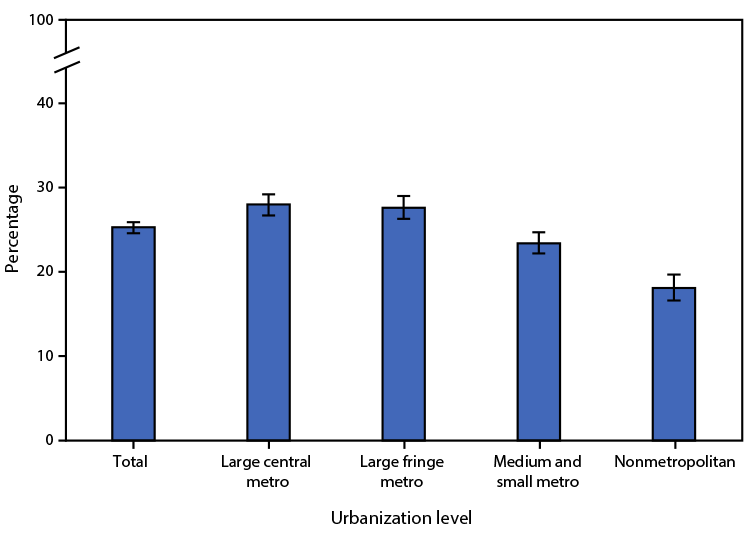
In 2020, 25.3% of US adults aged ≥18 years met the 2018 federal physical activity guidelines for both muscle-strengthening and aerobic physical activity. 

The percentage meeting both guidelines was highest in adults living in large central metropolitan (28.0%) and large fringe metropolitan areas (27.6%)...
...followed by those living in medium and small metropolitan areas (23.4%) and lowest in those living in nonmetropolitan areas (18.1%).
QuickStats: Age-Adjusted Percentage of Adults Aged ≥18 Years Who Met the 2018 Federal Physical Activity Guidelines for Both Muscle-Strengthening and Aerobic Physical Activity, by Urbanization Level — National Health Interview Survey, United States, 2020 (open access)
dx.doi.org/10.15585/mmwr.…
#exercise #fitness #fit #FitFam #FitLife #FitnessAddict #Workout #TrainHard #GymLife #GymTime #muscle #strength #lift #GetStrong #hypertrophy #gainz #gains
#exercise #fitness #fit #FitFam #FitLife #FitnessAddict #Workout #TrainHard #GymLife #GymTime #muscle #strength #lift #GetStrong #hypertrophy #gainz #gains
• • •
Missing some Tweet in this thread? You can try to
force a refresh





